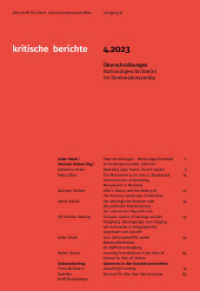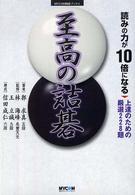基本説明
Incorporates MATLAB examples and exercises which will serve as a useful tool for NDE engineers.
Full Description
This book deals with ultrasonic nondestructive evaluation (NDE) inspections where high frequency waves are used to locate and characterize dangerous flaws (such as cracks) in materials. Ultrasonic NDE flaw inspections involve a very complex combination of electrical, electromechanical, and acoustic/elastic components so that it is important to understand the behavior of those components and their interactions in order to make quantitative flaw measurements. It will be shown that through the use of models and measurements it is now possible to characterize all the elements of an ultrasonic NDE flaw inspection system. Those elements include the pulser/receiver, the cabling, the transducers, and the wave propagation and scattering processes present in an ultrasonic NDE flaw measurement. It will also be demonstrated how to combine models and measurements of those elements to form ultrasonic measurement models which can simulate the flaw signals seen in ultrasonic NDE tests. This comprehensive modeling and measurement capability is described for the first time in this book. There are important engineering applications of this new tech- logy. For example, these ultrasonic models and measurements can be used to design new ultrasonic inspections as well as optimize existing ones. This technology can also help one to extract information on the nature of the flaw present from the measured ultrasonic flaw signals that can then be used to evaluate the safety and reliability of the material being inspected.
Contents
The Pulser.- The Cabling.- Transmitting Transducer and the Sound Generation Process.- The Acoustic/Elastic Transfer Function and the Sound Reception Process.- Transducer Characterization.- The System Function and Measurement System Models.- Transducer Sound Radiation.- Gaussian Beam Theory and Transducer Modeling.- Flaw Scattering.- Ultrasonic Measurement Models.- Ultrasonic Measurement Modeling with MATLAB.- Applications of Ultrasonic Modeling.








